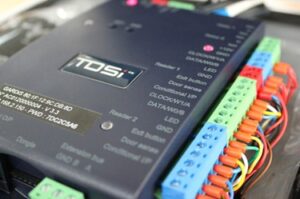
Integrated access control and security manufacturer Tdsi has announced the release of Gardis Pro Version 3.1, the latest enhanced iteration of its Gardis access control management software. The new upgrade presents expanded biometric support and intelligent credential management, delivering improved hardware reporting capabilities and new third-party integration options to further enhance system performance and flexibility.
Tina Baker, Software Development Manager at Tdsi commented, “We are excited to announce this latest update for Gardis Pro which delivers practical and meaningful upgrades that enhance both day-to-day operations and long-term scalability. Whether you’re securing a single site or managing complex, multi-layered environments, Gardis Pro v3.1 provides the tools to do it more efficiently and confidently than ever.”
The latest update to Tdsi’s Gardis Pro Software introduces a range of new features designed to enhance security, performance, and user experience.
Highlights of the Version 3.1 upgrade include:
● Support for the Digitouch Biometric Reader, enabling fast and cost-effective fingerprint authentication, and introduces automatic credential status updates to strengthen access control management. Administrators also benefit from customisable event log retention, improving compliance and system performance.
● New third-party integration with Nettla allows facility bookings to automatically trigger secure, time-limited access permissions, while updates such as accented character support, enhanced expander and door status reporting, and lift button press logging further improve system flexibility and monitoring precision.
● Additional refinements include a new Duress PIN alert function for discreet security responses and multiple backend performance enhancements that deliver greater stability and responsiveness across the platform.
The latest version of Tdsi’s Gardis Pro Software builds upon the release of Version 3 earlier this year, which introduced a wide range of new features and enhancements including intuitive access control tools, advanced reporting, streamlined setup processes, a simplified licensing workflow, new multi-factor authentication options, and improved data import and user interface refinements.











